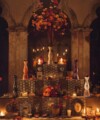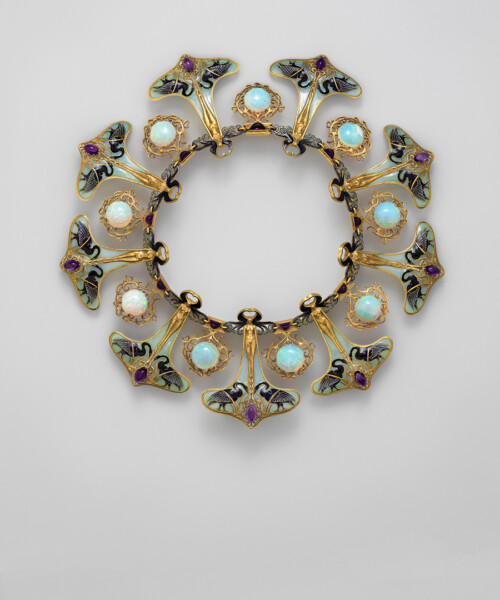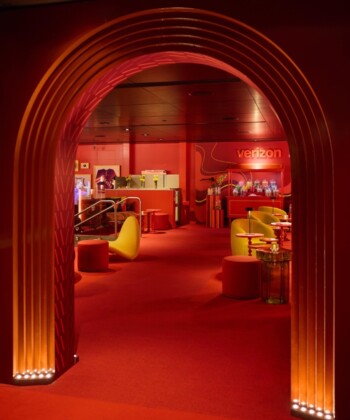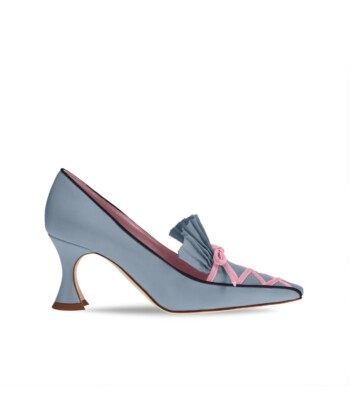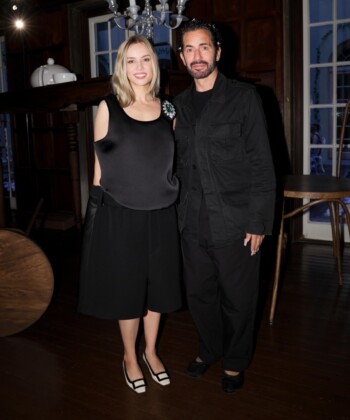Imagine descending a grand staircase in this glistening Art Nouveau collar, with its opals, amethysts, gold nudes, and plique-à-jour enamel ornaments. Two women presumably had the privilege. The first was the second wife of jewelry creator René Lalique (1860–1945). The other was Lillian Nassau, once dubbed the doyenne of New York antiques dealers, who gifted the jewel to The Metropolitan Museum of Art in 1985.
Part of a new jewelry exhibit at The Met called Jewelry: The Body Transformed, the circa-late-1890s necklace joins 230 mega-jewels created between 2600 B.C. and the present in an exploration of the ways that bijoux accentuate, activate, and enhance the body.
The necklace is a supreme example of the Art Nouveau style: “Each of the nine major elements features a slender woman with sensuous, curling hair that swirls around her head and is echoed in the tendrils that encase the opals,” says Beth Carver Wees, the museum’s Ruth Bigelow Wriston curator of American Decorative Arts, American Wing. “Amethysts and opals are among the most popular semiprecious stones used by Art Nouveau designers.”
In a gallery titled The Resplendent Body, the necklace appears within a subsection dedicated to the business of selling jewelry. Before striking out on his own, explains Wees, Lalique had earlier designed jewelry for Boucheron and Cartier, among others. This particular piece was chosen to represent the founding of Lalique’s workshop and the boutique he opened in Paris in 1885.
Jewelry: The Body Transformed is on view through February 24.
Main image: Courtesy of The Metropolitan Museum of Art





















